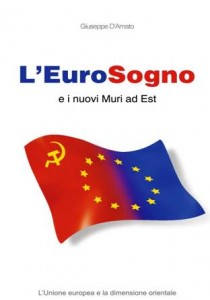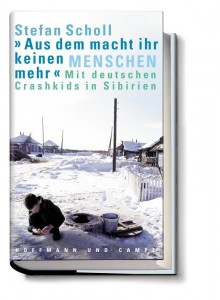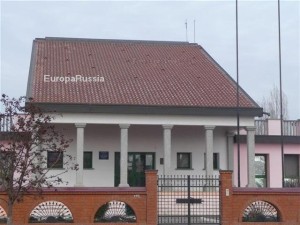History Culture
Poland, No conspiracy in Sikorki’s death.
3 Jan 2014A five-year investigation into the death of Polish World War II leader General Wladyslaw Sikorski has found no evidence to support conspiracy theories that he was murdered.
Institute of National Remembrance (IPN) has found no proof that Poland’s wartime prime minister was either murdered prior to the flight, or that the plane crash itself was caused by sabotage. 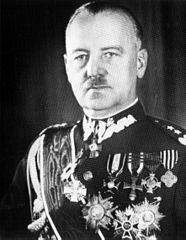
In a statement, IPN concluded that there is “no reasonable doubt” in the question of his boarding the plane alive.
The Polish leader’s death on 4 July 1943 remains a riddle to many, in spite of an official wartime investigation that claimed the crash was an accident.
Sikorski, who headed the Polish government-in-exile in London, was flying back to England after visiting Gibraltar when his Liberator plane plunged into the sea, shortly after take-off.
Apart from the pilot, who survived with broken limbs, all aboard apparently died immediately, although some bodies were never recovered, further fuelling conspiracy theorists.
Accusations have been levelled at Russia, Britain and a clique of Polish army officers over the years.
An official British military investigation blamed the crash on jammed controls in the cockpit.
As revealed in March 2013 by Piotr Dabrowski from IPN, besides archival work, two witnesses have been interviewed for the current probe in England and Spain.
The first was a radio operator who participated in the British navy’s salvage operation, immediately after the plane went down. The second was a diver who helped extract bodies from the wreck.
Claims that Sikorski had been murdered prior to take off were largely dispelled following the exhumation of his remains in 2008 at Wawel Cathedral, Krakow.
Noted British historian Professor Norman Davies told that “no reputable historian” had ever insisted that sabotage was the cause of Sikorski’s death.
Polskie Radio – Articles
Миграция в ЕС и русский национализм.
19 Nov 2013«Поднимаюсь на третий этаж. Давно не бывал в морском музее «Галата», что в 200 метрах от знаменитого генуэзского аквариума, в древнем порту…
Медленно передвигаюсь по залам, посвященным старой и новой миграциям…
С использованием официальной статистики ЕС показывается, что общепринятые клише о миграции совершенно неправильны. Точнее, просто ошибочны. 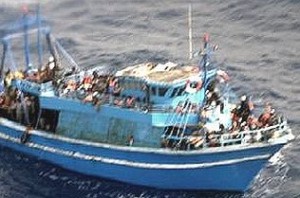
Ах, как я захотел, чтобы некоторые мои знакомые из России были в этот момент со мной! Они бы успокоились со своим излюбленными речами о страшных угрозах и чуть ли не гибели европейской цивилизации…
В России дело осложняется тем, что вопрос миграции из-за рубежа опасно смешивают с отношением к своим собственным регионам. Конечно, речь идет о Северном Кавказе. Италия тоже страдает от своего плохо экономически развитого юга, Германия — от востока, но никому и в голову не придет заявлять то, что все чаще звучит из уст некоторых государственных и политических деятелей России, включая ряд оппозиционеров.
Однако российским политикам все же придется ответственно объяснить гражданам разницу. В многонациональном государстве «русские марши» с популистскими лозунгами типа «хватит кормить Кавказ» и даже откровенными призывами к насилию и убийствам людей других национальностей провоцируют лишь тяжелые раны в обществе. Не стоит забывать страшный урок сербского национализма, в конце 1980-х годов прошлого века взорвавшего Югославию и принесшего огромное разочарование самим сербам».
Статья – Джузеппе Д’Амато Московский Комсомолец Московский Комсомолец № 26387 от 18 ноября 2013 г.Giuseppe D’Amato Moskovskij Komsomolets
La chiamavo Beatrix, la donna che regala la beatitudine. Lei rideva e mi lasciava nel dubbio.
Nel bosco c’ erano una ventina di gradi sotto lo zero. Con le sue amiche faceva un buco nella crosta ghiacciata dello stagno e si tuffava con il bikini nell’acqua gelida. Come se fosse a Catanzaro Lido in agosto. Orgogliosa ci faceva vedere il giorno dopo le fotografie. Le dicevo. Tu sei pazza, sorella.
Andava a cavallo e galoppava tra le betulle come un’amazzone. Io restavo a terra. La guardavo con il fiato sospeso perché temevo che il cavallo potesse scivolare, imbizzarrirsi, disobbedire. Bionda, con gli occhi chiari. Pareva una nordica, non una russa perché le russe hanno un diverso colore di capelli e sono molto alte. Bea non era alta.
Nella mia casa a Mosca ci riunivamo di sera i giornalisti e tiravamo con una balestra vera contro il bersaglio inchiodato dietro la porta.
Capitava che il dardo saltasse prima del tiro. Niente da fare. 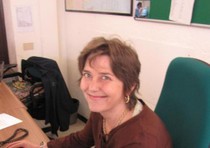
La regola era: ‘un colpo solo’. Perdevi così il turno. Beatrice quasi sempre faceva centro.
Un giorno del 1994 le cadde sul piede lo sportello dell’armadio e le fratturò l’alluce. Io andai a trovarla e le regalai una vecchia icona bruciacchiata che avevo comprato il giorno prima al mercatino di Ismailovo. Le piaceva molto. La teneva sempre sul comodino. Chissà dove sarà ora quella vecchia icona.
Venne con il piede ingessato a una mia festa. Ghenna la prese in braccio e la fece ballare. Piroettavano da un capo all’altro della stanza al suono di un lento. Forse Battisti.
Ghenna cercò di baciarla. Lei si scansò. Il russo ci rimase male, ma non si sbilanciò. Continuò a farla ballare tenendola in braccio.
Poi l’Ansa mi mandò in India. Beatrice andò a Belgrado. La rividi due anni fa. Scrissi questo pezzo per scarfone.blogspot.com.
***
‘’L’Università di Roma, la Sapienza, e l’Università Statale di Mosca, si somigliano. Non solo per la presenza nei due atenei di statue e dipinti che mostrano uomini di proporzioni colossali intenti a costruire il mondo nuovo. Non solo. Si somigliano principalmente nei volti austeri dei docenti, nell’allegria dei ragazzi che sciamano per corridoi, aule, scalinate.
Sono le tre del pomeriggio del 2 dicembre 2011. Nell’ingresso dell’università, grande due volte uno stadio di basket, si affollano centinaia di studenti, professori, fotografi. S’inaugura la mostra dell’agenzia ‘Ria Novosti’ e della stessa università sui venti anni (1991-2011) della Russia dopo la dissoluzione dell’Urss.
C’è uno spazio fisico, un vuoto tra le quattro persone che si accingono a presentare le mostra e la folla degli studenti. Diciamo pure, c’è la doverosa distanza tra chi apprende e chi insegna. All’esterno della Facoltà ci sono manifesti degli ‘Indignados’ contro la crisi e la disoccupazione giovanile. I ragazzi della Sapienza non sono cambiati: contestatori, ma rispettosi della ‘distanza accademica’.
I quattro sono: il rettore della Sapienza Luigi Frati, il padrone di casa. Esordirà dicendo in russo ‘Gospodin pamilumtsia’ (Signore perdonaci o qualcosa del genere) e poi proseguirà in italiano elogiando il lavoro dei fotografi della Novosti. C’è l’ambasciatore della Russia in Italia alexej Meshkov: a occhio e croce alto 1,85, ha il corpo di un medio-massimo sotto l’impeccabile completo blu ambasciatoriale. Nel suo discorso, tutto in italiano, si sofferma sul cammino comune fatto da Italia e Russia nel tempo. C’è il prorettore Antonello Biagini, responsabile per i rapporti internazionali, c’è il giornalista Sergey Startsev, direttore della Ria Novosti per l’Italia.
Poco prima della cerimonia si avvicina a Scarfone una donna, una bella donna, e lo fissa dubbiosa con grande intensità. L’uomo si sente imbarazzato e chiede: ‘’Lei è per caso parente degli Ottaviano?’.
La donna rimane zitta. Poi Scarfone sente per mezzo secondo un grido rabbioso: ‘Un colpo solo’. Certo, riconosce la donna e l’abbraccia con immenso affetto. Quella è Beatrice Ottaviano, ex capo di Ansa a Mosca, ora a Roma, incaricata di seguire la mostra fotografica sui vent’anni.
Nella mia casa a Mosca si riunivano di sera i giornalisti e tiravano con una balestra vera contro il bersaglio inchiodato dietro la porta. Ottaviano quasi sempre faceva centro. Il ruolo delle giornaliste italiane in Russia meriterebbe un libro: per la loro cultura, il coraggio, la femminilità nel Paese degli ussari e dei cosacchi.
Roberto Scarfone
Россия, «Русский марш» экстремистов.
4 Nov 2013Главным событием Дня народного единства по традиции стал «Русский марш». Эта традиция лично у меня стала вызывать недоумение. Почему в самый интернациональный день в году власти согласовывают не какое-нибудь фольклорное шествие народов в национальных костюмах, а акцию националистов? Их еще, чтобы избежать тавтологии, можем называть русскими фашистами. Они не против. И каждый раз, когда они получают санкцию на шествие 4 ноября, я не понимаю, это власть так слаба или фашизм так силен?
Статья – МК
Disappointment. This is Polish feeling for the ruling that the European Court of Human Rights is incompetent to judge whether Russia’s investigation into the 1940 Katyn killings of Polish war prisoners was insufficient.
Foreign Minister Radoslaw Sikorski said that the court’s Grand Chamber had “declined to give a clear judgement.” 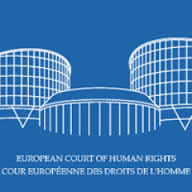
“Poles, including the Polish government, will not cease in their efforts to clarify all aspects of this heinous crime, while also striving for the full rehabilitation of the victims,” he insisted.
The process of rehabilitation is normally applied to those unjustly sentenced in court, and it would clear the victims of any stain on their honour under Russian law.
Sikorski noted nevertheless that the court had “clearly indicated that the Russian Federation did not provide this case and the court itself with sufficient cooperation.”
The court’s Grand Chamber had ruled that the adequacy of Russia‘s 1990-2004 investigation into the WWII massacres cannot be assessed, as the European Convention on Human Rights only came into force in Russia in 1998, eight years after Russia’s Katyn investigation began.
Polish foreign ministry issued an official statement, reiterating Sikorski’s comments, adding that Poland will also continue to demand that Moscow hands over all outstanding case files from its Katyn investigation.
The Katyn killings have been casting a shadow over relations between Poland and Russia for many years now, with Warsaw especially disappointed that Moscow was not willing to transfer documents concerning the massacre for further analysis.
The European court agreed that Russia had failed in this regard by refusing to submit a key procedural decision from the investigation and offered no substantive reason for maintaining its classified status.
From PAP – Radio Poland.
The exhibition consists of memorabilia related in various ways to the Prince, from the collection of the National Museum in Krakow. 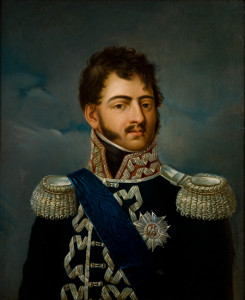
Józef Antoni Poniatowski was born on 7 May 1763 in Vienna to Andrzej Poniatowski and Teresa Kinsky. Bound for a military career, he eventually received the rank of General and became the Marshal of France; he was later announced as the Minister of War and Head of the Army of Warsaw County. On 19 October 1813, while covering the retreat of Napoleon’s forces during the Battle of Leipzig, Prince Józef was killed. His body, pulled out of water after five days, was brought back to Warsaw and buried in the Church of the Holy Cross a year later. His final interment took place on 23 July 1817 in St. Leonard’s Crypt at Wawel Cathedral.
The Prince was a singular character, famous for his military talents and outstanding courage, but also for his adventurous, even extravagant lifestyle, which contributed to his legend when illustrated in numerous works of high and popular art.
As a young man, he was a favourite with the Warsaw ladies, who gave him the nickname of Pepi.
With Poland being progressively partitioned during his uncle’s reign, the young Poniatowski ultimately fought in the anti-Tsarist Kosciuszko Insurrection of 1794.
After Poland had been wiped from the map, he joined forces with Napoleon, who in 1807 created the so-called Duchy of Warsaw, supposedly the kernel of a resurgent Poland.
However, the 1812 campaign, which Bonaparte dubbed his “second Polish war,” ended in disaster, and Poniatowski fell the following year at the Battle of Leipzig.
Legend recounts that the prince spurred his horse into the currents of the River Elster after refusing to surrender, a scene that duly became a staple subject for 19th century Polish painters.
The most common depiction of Prince Józef presents him in a military uniform decorated with medals and a sash across his chest. On the portrait donated to the National Museum’s collection by Adam Wolański in 1906, he is wearing the “great” uniform of the Division Commander, the sash of the Order of the White Eagle, and the star of the Legion of Honour, which he received in 1809. In the same year, Poniatowski was awarded with the highest Polish military decoration – The Grand Cross of the Virtuti Militari Order.
For over a century, he remained the only Pole decorated with such a prestigious medal. The star to the Grand Ribbon of the Virtuti Militari Order is the most precious element of our exhibition.
After the Prince’s death, the star was allegedly brought to Poland by his valet. His heirs then sold it to Henryk Stecki, who presented it as a gift to Emeryk Hutten-Czapski in 1873. The decoration was eventually incorporated into the National Museum’s collection, together with other donations from Hutten-Czapski. In 2006, the unique relic experienced another turn in its history, when it was stolen from an exhibition in Warsaw. Thought to be lost forever, the missing order was eventually found in the Ukraine and re-joined the national collection in 2008.
The exhibition runs at the central branch of the Historical Museum of the City of Krakow until 11 November.
From National Museum in Krakow site
«Большевики в России окончательно проиграли. Через несколько лет я расскажу своим повзрослевшим русским племянникам о трагедии обстрела Белого дома и разгона последнего Верховного Совета. Как свидетель, считаю это своим долгом, особенно когда новые единые учебники истории расскажут официальную и удобную власти правду… 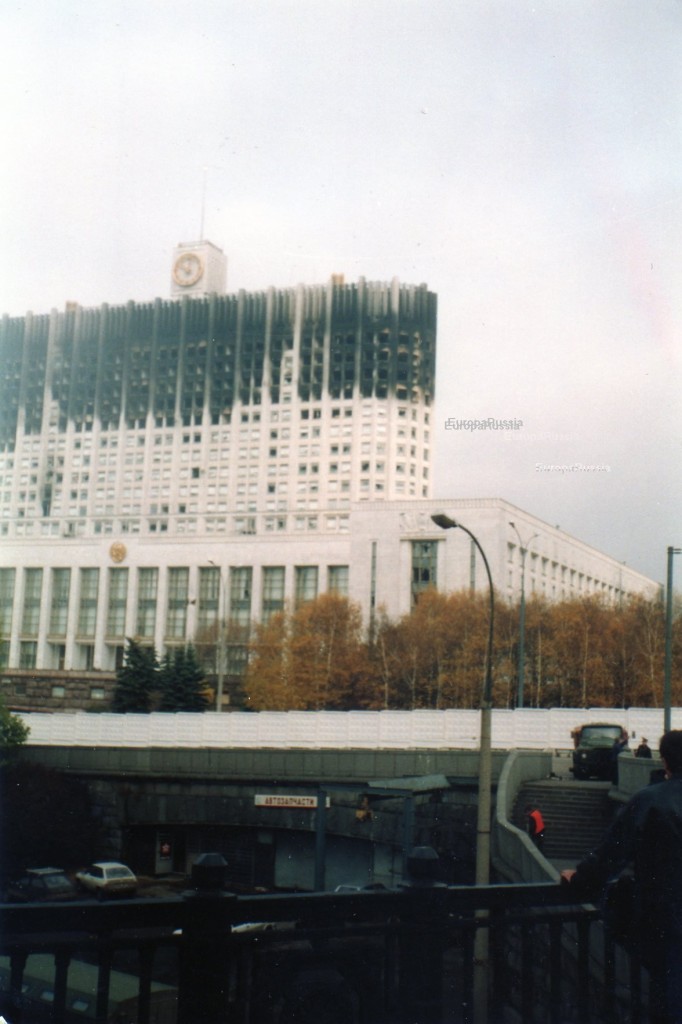
Сколько у меня воспоминаний… о первой российской постсоветской республике.
Должен вам заметить, мои племянники, что главной чертой российских политиков является неумение искать компромиссы в интересах страны. Каждый из них убежден, что выполняет особую миссию, и ждет от политического противника только капитуляции….
…Гуляя в конце сентября по Белому дому, я видел много вооруженных экстремистов. Шеф иностранных корреспондентов затащил меня в кабинет Хасбулатова на 5-м этаже. Из его слов я окончательно понял: примирения не будет…
Какие уроки я извлек из тех драматических событий?
Во-первых, убедился, что в смутные времена решительному деятелю в России для захвата власти достаточно небольшой танковой колонны (Ельцин) или немногочисленного отряда вооруженных солдат (Ленин). При этом тысячи иностранных дивизий не в состоянии оккупировать вашу страну!
Во-вторых, своими глазами я наблюдал то, о чем через несколько лет мне рассказал академик Лихачев. В февральских событиях 1917 года активно участвовал народ. Люди верили в лучшее будущее. А в октябре 17-го испуганные граждане остались дома, и малочисленная группа устроила переворот.
В 93-м году этого не получилось. По-разному действовали и победители. В 1918 году Ленин открыл лагеря для врагов народа. Ельцин же освободил всех своих противников через несколько месяцев и организовал досрочные выборы и референдум о Конституции…
Но прошло два десятка лет, Россия больше не «на коленях», и внутренние угрозы минимальны. Общественная стабильность, экономическое благосостояние, цивилизованная политическая активность («болотные» демонстрации в 2011 г. и местные выборы в сентябре 2013 г.) намекают на то, что России пора заканчивать со второй постсоветской республикой. Страна нуждается в полноценной демократической системе со сбалансированными институтами власти, а не национальными лидерами и популистскими вождями.
Сегодня правителям требуется куда меньше мужества, чем понадобилось Ельцину в 1993-м. Ничего страшного не случится, если власть в России будет меняться, становиться более гибкой, конкурентной и компромиссной. Во Франции уже живут в Пятой, в Польше — в Третьей, в Италии — во Второй республике!
Дорогие мои племянники, знайте, что 4 октября для России — день скорби. Нет победителей и нет побежденных. Тогда пролилась братская кровь. Радоваться надо только тому, что красно-коричневый монстр не возродился».
* * *
Статья – Джузеппе Д’Амато Московский Комсомолец № 26350 от 4 октября 2013 г. Giuseppe D’Amato Moskovskij Komsomolets.
Grandi manifestazioni sul Don per il 20esimo anniversario della costruzione dell’Asilo a Rossosch, Voronezhskaja oblast (circa 750 chilometri a sud da Mosca). Quasi un migliaio di alpini con le loro famiglie sono giunti in queste terre lontane per celebrare la ricorrenza.
Come si ricorderà, la struttura fu costruita sul luogo, dove sorgeva il Comando alpino durante la Seconda guerra mondiale. Subito dopo la caduta del Muro di Berlino gli italiani sono tornati quaggiù, dove migliaia di connazionali riposano in pace.
La costruzione dell’Asilo, al cui interno si trova il Museo del Medio Don – diretto dal prof. Alim Morozov, è stato l’ulteriore dimostrazione della riappacificazione tra i due popoli divisi dalla tragedia della guerra voluta dagli opposti totalitarismi.
Il centro dei festeggiamenti è l’Asilo. E’ previsto anche un concerto in piazza Lenin, con la partecipazione di un coro degli alpini ed artisti locali. Gli ospiti italiani hanno visitato venerdì le rive del Don distanti alcune decine di chilometri ad est da Rossosch e domenica Nikolajewka (oggi Livenka), circa 150 chilometri ad ovest del capoluogo provinciale.
Giuseppe D’Amato
Sono passati 9 anni da quelle tragiche giornate a Beslan. Da allora il ritorno a scuola per gli studenti russi e per l’intero Paese non è più la festa di prima. L’incubo di quelle drammatiche ore viene rivissuto sui giornali ed in televisione. Manifestazioni vengono tenute ovunque nel gigante slavo. Il ricordo di quell’orrore non deve sopirsi, è il desiderio della società federale. 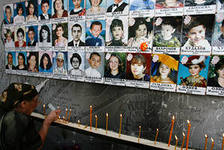
La strage di Beslan ha segnato la vera fine del terrorismo nel Caucaso russo. Quel marchio di infamia, determinato dalla morte di centinaia di bambini inermi in una scuola, ha sancito la perdita di fiancheggiatori e sostegni interni ed esterni alla causa separatista ed estremista.
La regione, crogiuolo di etnie spesso nemiche tra di loro appartenenti a diverse confessioni religiose, è stata inondata dai petro-rubli dal Centro moscovita. La disoccupazione è un po’ diminuita, ma la pesante situazione socio-economica rimane inalterata.
La Cecenia è stata quasi completamente ricostruita ed è governata oggi con metodi criticati dalle organizzazioni umanitarie da Ramzan Kadyrov. La vicina Inguscezia gode di una certa stabilità grazie al prestigio del presidente Evkurov, eroe russo in Kosovo negli anni Novanta.
L’Ossezia settentrionale, a parte la tragedia di Beslan, è riuscita a restare fuori sia dall’incendio ceceno che dalla successiva guerra nel 2008 con la Georgia.
Per il Cremlino i problemi restano in Kabardino-Balkaria, ma soprattutto in Daghestan, dove non passa giorno che si ha notizia di un attentato. La strategia di attaccare la popolazione civile per seminare terrore è stata comunque sconfessata.
Giuseppe D’Amato
Россия без политики культуры.
1 Sep 2013«Приезжаю в Россию. Включаю телевизор. Какой-то ужас! Одни американские фильмы низкого качества, в которых царит насилие, и сплошные программы для неудовлетворенных домохозяек, с ведущими, постоянно употребляющими английские слова, чтобы показать, какие они крутые. На ум сразу приходят три вопроса.
Лет через сто россияне будут еще говорить по-русски? Иностранцы будут пользоваться «великим и могучим языком» Пушкина? И что будет известно за границей о культуре страны, в которой жили Гоголь, Толстой, Достоевский?
«Надо поднять «имидж» России», — командует власть. Но как? … »
Статья – Джузеппе Д’Амато Московский Комсомолец № 26238 от 25 мая 2013 г. Giuseppe D’Amato Moskovskij Komsomolets.
Welcome
We are a group of long experienced European journalists and intellectuals interested in international politics and culture. We would like to exchange our opinion on new Europe and Russia.
Categories
- Breaking News (11)
- CIS (129)
- Climate (2)
- Energy&Economy (115)
- EU Eastern Dimension (85)
- Euro 2012 – Sochi 2014 – World Cup 2018, Sport (43)
- Euro-Integration (135)
- History Culture (198)
- International Policy (261)
- Military (74)
- Interviews (18)
- Italy – Italia – Suisse (47)
- Odd Enough (10)
- Poland and Baltic States (126)
- Religion (31)
- Russia (421)
- Survey (4)
- Turning points (4)
- Ukraine (176)
- Российские страницы (113)
Archives
- November 2020
- October 2020
- September 2020
- August 2020
- July 2020
- May 2020
- April 2020
- March 2020
- January 2020
- December 2019
- November 2019
- October 2019
- September 2019
- August 2019
- July 2019
- June 2019
- May 2019
- April 2019
- March 2019
- February 2019
- December 2018
- November 2018
- October 2018
- September 2018
- August 2018
- July 2018
- June 2018
- May 2018
- April 2018
- March 2018
- February 2018
- January 2018
- December 2017
- November 2017
- October 2017
- September 2017
- August 2017
- July 2017
- May 2017
- March 2017
- January 2017
- December 2016
- November 2016
- October 2016
- September 2016
- July 2016
- June 2016
- May 2016
- April 2016
- February 2016
- January 2016
- November 2015
- October 2015
- September 2015
- June 2015
- April 2015
- March 2015
- February 2015
- January 2015
- December 2014
- November 2014
- October 2014
- September 2014
- August 2014
- July 2014
- June 2014
- May 2014
- April 2014
- March 2014
- February 2014
- January 2014
- December 2013
- November 2013
- October 2013
- September 2013
- August 2013
- July 2013
- June 2013
- May 2013
- April 2013
- March 2013
- February 2013
- January 2013
- December 2012
- November 2012
- October 2012
- September 2012
- August 2012
- July 2012
- June 2012
- May 2012
- April 2012
- March 2012
- February 2012
- January 2012
- December 2011
- November 2011
- October 2011
- September 2011
- August 2011
- July 2011
- June 2011
- May 2011
- April 2011
- March 2011
- February 2011
- January 2011
- December 2010
- November 2010
- October 2010
- September 2010
- August 2010
- July 2010
- June 2010
- May 2010
- April 2010
- March 2010
- February 2010
- January 2010
- December 2009
- November 2009
- October 2009
- September 2009
- August 2009
Our books


